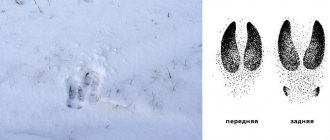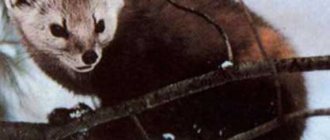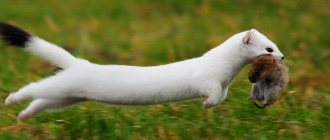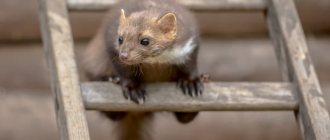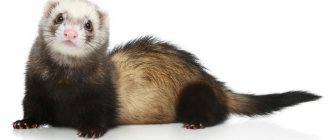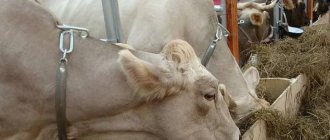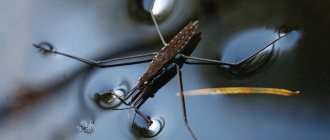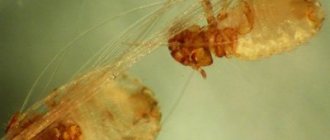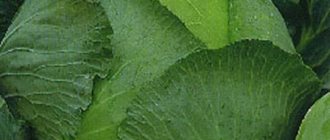Systematization of traces of forest inhabitants
To make it easier to decipher the tracks of forest animals, their classification has been made. Thanks to this, it is easier to figure out which animal left a characteristic mark in the snow. For example, representatives of the canine family leave covered prints in one line. The toe pads with claws are clearly visible on the soil or snow.
Animals such as the brown bear and badger leave a characteristic covered footprint with long claws and bare soles, the size of the front paws is smaller than the hind paws.
A badger's footprint is very similar to a bear's, only smaller in size.
The easiest way to understand is that one of the representatives of the mustelid family walked through the snow. Weasel, marten or sable leave a visible trace of short legs.
Large forest cats, for example, a tiger or a lynx, do not have claw marks, and the tracks of different types of hares are such that it is immediately clear that the animal was running away at a skip.
Deer and related ungulates leave hoof prints.
If the footprint is very small, then this means that a small forest animal passed by: a hedgehog, a squirrel, a mouse, a jerboa, and so on.
In squirrel tracks, larger prints appear at the front.
Paired paw and tail prints are left by numerous field mice, which in the forest serve as food for many predators. The rodent squirrel leaves a trapezoidal four-bead trail.
If you can see that an animal with long outstretched fingers has walked along the ground, then this is most likely the path of a hedgehog.
Ermine
Ermine - body length 18-26 cm. In summer the fur is brown, in winter it is pure white. The end of the tail is always black.
- Habitat biotope.
Banks of reservoirs, edges, clearings, edges of swamps. - What does it eat?
Mouse-like rodents, eggs, chicks, carrion. - Ecology of the species.
The lifestyle is sedentary and secretive. They usually hunt at night. Swims well. Rutting from February to July. There are from 2 to 18 cubs in a litter, usually 6–8. The number is subject to sharp fluctuations. Ermine fur is used as finishing fur. The fur quality standard belongs to Russia. The best quality American varieties are comparable only to the ninth quality level of our standard.
Footprints in the snow
In winter it is much easier to see and decipher tracks than in summer. The white blanket shows prints of almost all forest inhabitants, and not only mammals. If there was no snowfall, then they are very distinct. These tracks usually lead in one of three directions: to the feeding area, to the daytime area, or to the animal’s burrow.
The trail may unexpectedly end near a tree, which means that an animal or bird has climbed a fir tree or birch tree. The specialist immediately determines whether the walker is a predator or a herbivore, an adult or a baby. Some biologists can even distinguish between the paw prints of a female and a male, a sick and a healthy animal.
To correctly determine whether a trace belongs to a specific representative of the forest fauna, you should know the habits, diet and rest regime of the inhabitants of the taiga or mixed forest, as well as the influence of weather on its life activity.
Weasel
Weasel - The smallest representative of mustelids. Body length up to 20 cm. In summer, the fur is brownish-brown, the underside is white. In winter the fur is completely white.
- Habitat biotope.
Various types of forests, field edges, near housing. - What does it eat?
Mouse-like rodents, birds, insects. - Ecology of the species.
The lifestyle is twilight-nocturnal. Actively uses the burrows of mouse-like rodents to search for prey and as a refuge. Moves easily in thick snow. The hunting area is no more than 10 hectares, the daily movement is up to 3 km. When there is an excess of food, it makes reserves - they have found pantries with 100 or more killed rodents. Under favorable conditions, there are 2 broods per year, with 3 to 12 cubs in a litter
Detailed description
Scientists analyzed the footprints of various forest animals. Now every tracker will be able to distinguish by description who owns this or that trail.
• The wolf is a gray forest predator. In summer it is very difficult to see its tracks, but in winter it travels vast distances in search of food. It moves within a pack or alone to find and catch deer, roe deer, elk, hare or other herbivores. Wolves prefer to follow their old paths. The print of this secretive predator resembles that of a dog. But an experienced hunter can easily recognize a wolf's footprint by its larger size and protruding pair of middle fingers. When moving, the wolf places its back right paw in the footprint of its front left paw.
The front toes of a wolf are more forward and are separated from the hind toes by the width of a match, while in dogs, the toes are gathered together and such a gap is no longer observed
• In winter, the bear sleeps in a den. He does not leave his winter house and dreams sweet dreams. But, awakened by the noise of gunfire, he sometimes wakes up and becomes a connecting rod. Therefore, if you manage to see a footprint in the snow that is distinguished by a clubfoot, you should immediately leave the forest.
The winter wandering bear kills everyone who gets in his way. This large forest animal received its nickname “clubfoot” precisely because of its clubfoot. Bear claws are clearly visible on the rounded print of the front paws, and the print of the hind paws is somewhat similar to a human print, only larger. A bear's footprint can be up to twenty centimeters in diameter and cannot be confused with any other trace.
In the print of the bear's front paw, the pads of the fingers are clearly visible, the outlines of the footprint look neat
• The fox is a beautiful forest predator with a red coat. She loves to mouse in the mornings and evenings, and relax on her bed during the day. But if it’s cold, then she goes out to hunt, leaving behind a long line of prints in the snow. The fox track is similar to the dog track, but slimmer and smaller.
The fox's footprint resembles boats - the imprints of an elongated paw with tightly clenched toes.
• It is impossible to see a hare's track in summer. But in winter, the scythe wanders not only through the forest, but also visits villages to eat the bark of fruit trees and harm people. Hares run in jumps, throwing their hind legs forward and their front legs one after the other in succession. If the trail is found in the thicket of the forest, it means that a white squirrel has run across it. And if found in a clearing, meadow or forest-steppe, then these are most likely the paw prints of a hare. Both types of hares have small prints on the back and larger prints on the front.
The tracks of a hare are different from those of a white hare
• In the forest, in the field, in the meadows you can see footprints similar to those of a cow. But no one grazes livestock there, and therefore these are traces of the elk - the handsome forest elk. It leaves very deep marks that look like trenches. Males always have larger tracks than females. This ungulate leaves an image of hooves on a blanket of snow with two large toes in front and two small ones slightly above.
Moose tracks are similar to those of other ungulates, but are significantly larger in size.
• The furry sable lives primarily in the Siberian taiga. If a fisherman sees the tracks of an animal that jumps up to half a meter in length and leaves a double trace of a rounded shape and large size without visible fingertips, then he begins to track the animal or chases it with a husky.
On loose snow, paired sable prints most often merge into one hole
• The lynx is a wild forest cat that hunts primarily for hares. The tracks of this animal with very amazing ears are similar to those of a cat, only larger in size, reaching eight by eleven centimeters in length and width. The lynx loves to move along its old paths along streams, forest edges, and the bed of a taiga river.
It is nocturnal, and if it snows during the day, its tracks may be hidden under freshly fallen powder. In addition, the predator itself is very secretive and rarely catches the eye. Thus, forest dwellers move not only through their native forest, but can also leave traces on the edge of the forest, on the river bank, near the village, and even in the village itself.
The traces of some animals can be discerned by any passerby, but deciphering the paw prints of individual forest inhabitants is only possible by obtaining theoretical knowledge of zoology.
Preventing predators from entering
The best preventive measure is to repair an existing chicken coop or build a new one. In the event that the weasel has become a frequent guest, a new structure will have to be erected.
When carrying out repair work, you need to pay attention to a number of factors:
- eliminating all cracks and holes, even the smallest ones;
- replacing rotten wood;
- strengthening the floor in the poultry house with tin plates;
- cleaning the area around the chicken coop. All garbage heaps and any piles that could become a refuge for a predator must be removed;
- digging a chain-link mesh around the perimeter of the chicken coop;
- installing a chicken coop on piles.
In addition, you should take care of the concrete floor and high-quality roofing, thereby eliminating the possibility of undermining.
Pet Help
It’s good if, in addition to chickens, the poultry house contains geese and turkeys. These birds, having noticed a predator, begin to scream heart-rendingly. And the large size of their body does not allow the weasel to quickly kill them.
Pets scare away forest predators just as well as electronic devices. If a cat can handle rats, then it can handle affection. The main thing is to provide her with free access to the chicken coop.
In order for the dog to scare away uninvited guests, the booth must be built next to the chicken coop. Or attach a long chain to the collar, allowing you to reach the poultry house. But you shouldn’t let the dog into the chicken coop itself. By barking and chasing weasels, he can frighten and injure birds .
Preventing predators from entering
The farmer must carefully inspect the chicken coop and the surrounding area and, if necessary, carry out the following work:
- caulk all holes, cracks, cracks, even small ones;
- replace rotten, damp parts of a wooden structure with new ones;
- strengthen the flooring with metal plates;
- put the poultry house on piles;
- fence the chicken coop with chain-link mesh;
- clear the area of debris, piles of fallen leaves and other things that could become a hiding place for a predator.
It is advisable to make the floor of the chicken coop concrete and install a durable roof. If the building is in poor condition, then it is easier to build a new one.
